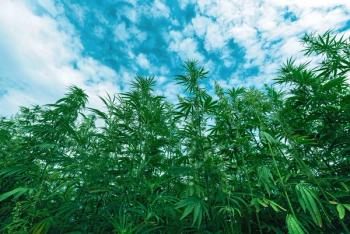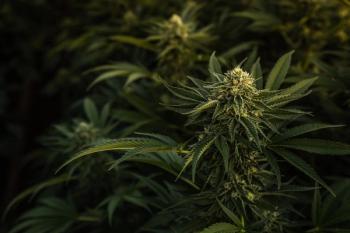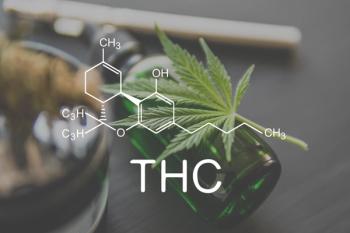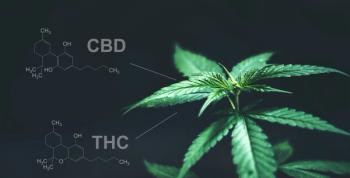
Cannabis Science and Technology
- June 2022
- Volume 5
- Issue 5
- Pages: 8-13
Quantitative Spectroscopy: Practicalities and Pitfalls, Part I

Here we discuss the importance of using standards that bracket the expected concentration range of standards in the unknowns, using the same chemical components in standards and unknowns, and making sure to minimize the error in concentration measurements of standards.
The last three installments of this column (1–3) have been devoted to a discussion of Beer’s Law, which is the mathematical relationship between the amount of light absorbed by a sample and concentration, which makes spectroscopy quantitative (4). In the first installment (1), I showed how to use Beer’s Law to develop a calibration and then use it to measure concentrations in unknown samples. In the second column (2), Beer’s Law was derived from first principles, and in the most recent installment (3) I demystified the absorptivity for you.
Beer’s Law is important in cannabis analysis because most high performance liquid chromatography (HPLC) cannabis potency methods use an ultraviolet-visible (UV-vis) quantitative spectroscopy detection technique (5). Additionally, there exist cannabis potency analyzers that use quantitative infrared spectroscopy (6). Hence my statement in the first installment of this series (1), that Beer’s Law is the most important equation in cannabis potency analysis.
Now that I have introduced Beer’s Law and shown how to use it to perform quantitative spectroscopy, I will begin a series of columns containing practical tips and pitfalls to avoid to help you develop accurate spectroscopic calibrations. In this installment, we will discuss the importance of using standards that bracket the expected concentration range of standards in the unknowns, using the same chemical components in standards and unknowns, and making sure to minimize the error in concentration measurements of standards.
A Brief Review
Beer’s Law is the equation that relates the amount of light absorbed by a sample to its concentration and has the form seen in Equation 1 (1–4):
where A is the absorbance, the amount light absorbed by a sample; ε is the absorptivity, a fundamental physical constant of a molecule; L is the pathlength or sample thickness; and C is the concentration.
The absorbance spectrum of a series of samples of known concentration called standards is measured. The peak height or peak area (the absorbance) of the molecule of interest (the analyte) is determined. A plot of absorbance versus concentration called a calibration line is then made (1–4). The slope of this line gives εL which is used in Equation 2 to predict the concentration of analyte in unknown samples.
where Cunk is the concentration of analyte in an unknown sample, and Aunk is its absorbance.
Advice to Improve and Pitfalls to Avoid in Calibration
The rest of this and some upcoming columns will contain a list of practical tips that you should know that will help you do a better job of obtaining quality spectroscopic calibrations. The list will also contain pitfalls to avoid, which, if you fall into them, will prevent you from achieving your quantitative spectroscopy goals.
Use Standards that Bracket the Expected Concentration Range in Your Unknowns
My definition of a standard is a sample containing a known concentration of analyte whose matrix is the same as that of the anticipated unknown samples. A Beer’s Law calibration line of peak areas versus concentration, built with five standard samples from the data seen in Table I, is shown in Figure 1.
This plot is for isopropyl alcohol (IPA) dissolved in water, and we have seen it before (1). Note that the plot extends from about 9% to 70% IPA. This means that this calibration can only be used on unknown samples whose IPA concentrations fall between 9% to 70%. This calibration cannot be used on IPA in water samples whose concentrations are above 70% or below 9% because the calibration line has no data points in these regions. We know nothing about the behavior of the calibration line outside the calibration range, so we cannot legitimately use it there. To use this calibration outside its calibration range would be extrapolating the calibration, which is always tempting and is always wrong.
The maxim here is: “Use standards that bracket the expected concentration range in your unknowns” and is meant to solve this problem. By choosing standard samples whose highest concentration are above any anticipated unknown sample, and lower than in any anticipated unknown sample, your analyses will always be in the range where the calibration line actually has data and can be legitimately used. This means when developing your calibration method you will have to plan ahead, try to predict as best as possible what the highest and lowest unknown concentrations will be, and then make up your standards to bracket those concentrations accordingly.
Use Actual Components When Preparing the Standards
One of the big take aways from the last column (3) is that the absorptivity is matrix sensitive. That is, it depends upon a sample’s chemical environment including temperature, pressure, pH, concentration, and chemical composition. In that column, I shared an anecdote about a customer of mine who tried to use a mid-infrared spectrometer calibrated to analyze cannabis buds to look for tetrahydrocannabinol (THC) in pizza. This analysis of course gave nonsensical numbers because there was a calibration applicability problem. No analytical instrument, be it a spectrometer or a chromatograph, can quantitate sample types it hasn’t been calibrated to analyze.
In quantitative spectroscopy the calibration applicability problem rears its ugly head when the analyte’s absorptivity in the standards does not match that of the unknowns. This can happen when the chemical components used to make up standard samples do not match those in the unknowns. For example, the calibration line seen in Figure 1 is for IPA dissolved in water. This calibration will not work for IPA dissolved in acetone because IPA’s absorptivity in these two sample matrices will be different.
Another problem with not using the same chemical components in standards and unknowns is illustrated by a story a colleague once shared with me. An analytical chemist was tasked with developing a spectroscopic method for measuring the amount of water in acetone samples obtained from a factory floor. The chemist, thinking that purer is always better, made water in acetone samples using 99% pure chromatography grade acetone that was available in the laboratory, and developed a lovely calibration with a great correlation coefficient (see reference 1 for the definition of this term). However, when the method was implemented, independent testing showed it gave inaccurate results. What happened?
The problem was although a good calibration was developed, it was the wrong calibration. Out in the factory the material being analyzed was made up using technical grade 95% pure acetone. This meant that the unknown samples contained 5% impurities, whereas the standard samples contained 1% impurities. This presents three problems. First, those impurities could affect the absorptivity of water meaning it might be different in the samples and unknowns, presenting us with a calibration applicability problem. Second, if the impurities in the technical grade acetone absorb light at the same wavelengths as water, they will skew the water concentration measurements. Lastly, all concentration determinations will be off because for a given absorbance measurement the unknowns will have 4% more water than the standards.
One of the biggest challenges in quantitative spectroscopy is making sure that the matrix of the standards matches the matrix of the unknown samples so that the absorptivity of your analyte calculated from the slope of your calibration line will be the same as that for the analyte in the unknowns. This is why it is so important when making up standards to use the same chemicals for the standards and the unknowns.
Make Standards with Concentrations as Accurate as Possible
I have been talking a lot about making up standards, but haven’t yet really shared with you how to make them. For simple single analyte quantitative spectroscopic analyses, like we have been discussing, it can be easy. For the IPA in water data shown in Figure 1, I started with a known solution of 70% IPA in water and diluted it with the appropriate amount of water to obtain standards containing 9%, 18%, 35%, and 53% IPA. Calibrating a spectrometer for more complex matrices, such as cannabis plant material, is complicated. In work I have discussed previously in this esteemed journal (7) for complex sample matrices one must calibrate using matrix reference materials. These are samples of the matrix of interest that have had analyte concentrations determined by an independent method. In my case, the standards were analyzed for cannabinoid concentrations using an HPLC method that used, wait for it, a quantitative UV-vis spectroscopy detection method making use of Beer’s Law (5). Calibrating a spectrometer to analyze a complex matrix such as cannabis is more complicated than what I have been discussing in this column series (1–4), but all the information I will be sharing with you here is still relevant.
In a previous column I have talked about error, precision, accuracy, and a thing called the signal-to-noise ratio (SNR) (8). For any data set, the SNR can be thought of as the ratio of the measured value to the error in its measurement as seen in Equation 3.
A practical example of SNR is when you are talking on the phone. The volume of the caller’s voice is the signal, and the static in the call is the noise. The greater the volume of the caller compared to the static the higher the SNR, the easier it is to understand the caller, and the higher the quality of the information received. On the other hand, when you have a bad connection the volume of the caller is low compared to the static, the SNR is low, the other person is hard to understand, and the quality of the information received is low. Hence, high SNRs in analytical data are always preferred over low SNRs.
In quantitative spectroscopy we use absorbance values in our calibrations, and since absorbance is usually plotted on the y-axis, it is the size of this error we are concerned about. Figure 2 shows several mid-infrared spectra of polystyrene containing different SNRs.
The bottom spectrum, with an SNR of 1.2, is what true noise looks like in a spectrum: a collection of random, jagged, up and down features with no meaning. The middle spectrum, with an SNR of 4, has peaks that are clearly due to polystyrene, but they are so small compared to the noise that they are not usable for quantitative work. The top spectrum, with SNR = 27, is much better with clearly seen peaks and very little noise. The peaks in this spectrum are of high enough quality to be used for quantitative analysis. In general, spectrometers are capable of SNRs of 100 or better on many sample types, which means the error level is often times less than 1%.
The sets of information we use to make Beer’s Law plots, as seen in Figure 1, are absorbances and concentrations. Concentration information can be obtained by many different types of methods, including weighing out the amounts of analyte to be used in a standard (“gravimetric methods”), measuring the volume of analyte to put into standards as I discussed above, and from HPLC and gas chromatography (GC). For cannabis matrix reference materials, cannabinoid concentrations are often determined by HPLC and terpene concentrations by GC. In my own experience, discussions with other analytical chemists, and reading of the literature (9), concentration measurements often times only have SNRs of 20 at best, meaning the error level is often times 5% or greater. In general, concentration data has more error in it than absorbance data, which is why it is so important to make up and analyze standards as accurately as possible. Also, if you want to improve a spectroscopic calibration, your effort is best invested in correcting error in the concentration measurements because that is the surest and easiest way to increase accuracy.
Conclusions
In this column we have begun our discussion of practical tips to improve and pitfalls to avoid when developing quantitative spectroscopic methods. Using standards that bracket the expected concentration range of the analyte in the unknowns is required because it is always tempting, and always wrong, to extrapolate a calibration line to concentration ranges where you have no data. Using the same chemical components in standards and unknowns is important to ensure the analyte’s absorptivity is the same in standards and unknown and to ensure quantitative accuracy. Making up standards carefully and minimizing the error in concentration measurements used in a Beer’s Law plot is a sure way to increase the accuracy of your quantitative spectroscopic measurements.
References
- B.C. Smith, Cannabis Science and Technology® 5(2), 10-13 (2022).
- B.C. Smith, Cannabis Science and Technology® 5(3), 10-14 (2022).
- B.C. Smith, Cannabis Science and Technology® 5(4), 8-15 (2022).
- B.C. Smith, Quantitative Spectroscopy: Theory and Practice (Elsevier, Boston Massachusetts, 2002).
- M.W. Giese, M.A. Lewis, L. Giese, and K.M. Smith, Journal of AOAC International 98(6), 1503 (2015).
www.bigsurscientific.com .- B.C. Smith and C. Fucetola, Cannabis Science and Technology® 3(6), 24–38 (2020).
- B.C. Smith, Cannabis Science and Technology® 1(4), 12–16 (2018).
- H. Mark, Principles and Practice of Spectroscopic Calibration (Wiley, New York, New York,1992).
About the Columnist
Brian C. Smith, PhD, is Founder, CEO, and Chief Technical Officer of Big Sur Scientific. He is the inventor of the BSS series of patented mid-infrared based cannabis analyzers. Dr. Smith has done pioneering research and published numerous peer-reviewed papers on the application of mid-infrared spectroscopy to cannabis analysis, and sits on the editorial board of Cannabis Science and Technology®. He has worked as a laboratory director for a cannabis extractor, as an analytical chemist for Waters Associates and PerkinElmer, and as an analytical instrument salesperson. He has more than 30 years of experience in chemical analysis and has written three books on the subject. Dr. Smith earned his PhD on physical chemistry from Dartmouth College. Direct correspondence to:
How to Cite this Article:
B. Smith, Cannabis Science and Technology® Vol. 5(5), 8-13 (2022).
Articles in this issue
Newsletter
Unlock the latest breakthroughs in cannabis science—subscribe now to get expert insights, research, and industry updates delivered to your inbox.




